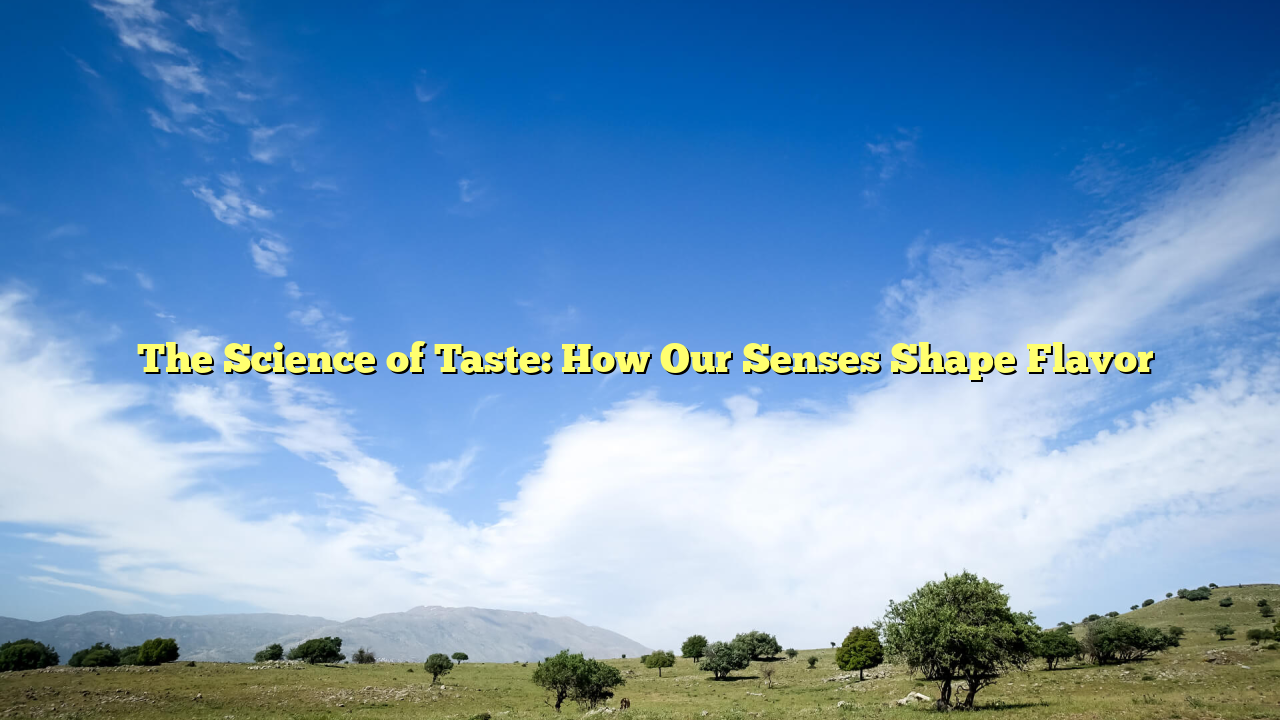Food is more than just fuel for our bodies—it’s an experience that engages all our senses. From the aroma of freshly baked bread to the crunch of potato chips, the science of taste goes beyond just what happens on our tongues. Our perception of flavor is influenced by a complex interplay of taste, smell, texture, sight, and even sound.
In this article, we’ll explore how our senses shape flavor, the role of the brain in taste perception, and why certain foods taste better to some people than others.
1. The Five Basic Tastes
Our taste buds can detect five primary tastes, each linked to specific evolutionary needs:
👅 Sweet – Signals energy-rich foods (e.g., sugar, honey, fruits).
🧂 Salty – Helps maintain electrolyte balance (e.g., salt, soy sauce).
🍋 Sour – Alerts us to unripe or spoiled food (e.g., citrus, vinegar).
🥩 Umami – Enhances protein detection (e.g., meat, cheese, mushrooms).
☕ Bitter – Warns against potential toxins (e.g., coffee, dark chocolate).
slot deposit 1000 qris is detected by taste receptors on our tongue, which send signals to the brain. But taste alone isn’t enough to experience flavor—other senses play a crucial role.
2. The Role of Smell in Flavor Perception
👃 Smell accounts for up to 80% of what we perceive as taste.
When we chew, aroma molecules travel up to our olfactory receptors in the nose, influencing how we perceive flavor. That’s why food tastes bland when we have a stuffy nose!
🔬 Scientists call this “retronasal olfaction”, and it explains why smelling coffee gives us an idea of its taste before we even sip it.
3. Texture and Mouthfeel: Why Crunch Matters
The way food feels in our mouth affects how we enjoy it. Different textures create different eating experiences:
✅ Crunchy – Chips, fried chicken (associated with freshness and satisfaction).
✅ Creamy – Ice cream, mashed potatoes (signals richness and indulgence).
✅ Chewy – Steak, bread (adds to the enjoyment of eating).
🍬 Fun Fact: Some foods like pop rocks and carbonated drinks add “pain” as a sensation, making them more exciting!
4. How Sight Influences Taste
👀 Our brain often “tastes” with our eyes first.
Experiments show that people expect red drinks to taste sweeter and green ones to be sour—even when they are the same flavor.
🍽️ Plating & Color Psychology
● White plates make food taste sweeter.
● Red plates can reduce appetite.
● Blue lights make food look unappetizing (used in some weight-loss settings).
Restaurants use this science to enhance food presentation and influence perception.
5. Sound and the Eating Experience
🎧 The sound of food can change its taste perception.
● Crunchy chips sound louder when fresh.
● Sizzling steaks make food seem more appetizing.
● Music tempo can influence how fast or slow we eat.
This is why fast-food chains play upbeat music (to encourage quick eating), while fine-dining restaurants play slow music (to enhance the experience).
6. Why Do Some People Taste Things Differently?
👩🔬 Genetic differences affect taste perception!
● Super Tasters (25% of people): Have more taste buds, making them sensitive to bitter flavors.
● Non-Tasters (25% of people): Have fewer taste buds and prefer strong, spicy flavors.
● Average Tasters (50% of people): Fall somewhere in between.
🧬 Evolution also plays a role—people from hot climates enjoy spicy foods more, as it helps with sweating and cooling the body.
7. The Future of Taste Science
🔬 Food scientists are working on:
✅ Enhancing flavors without sugar or salt.
✅ Creating plant-based meats with “real” meat flavors.
✅ Using AI to predict food pairings.
With new discoveries, the way we experience food could change dramatically in the coming years!
8. Conclusion: Taste Is More Than Just the Tongue
Our five senses work together to create the full experience of flavor. From the smell of a dish to its texture, color, and even the sound it makes when we bite into it, taste is a multi-sensory experience shaped by biology, psychology, and culture.
Next time you eat your favorite dish, pay attention to how each of your senses contributes to the experience—you might discover a whole new appreciation for food! 🍽️👅
The Science of Taste: How Our Senses Shape Flavor



